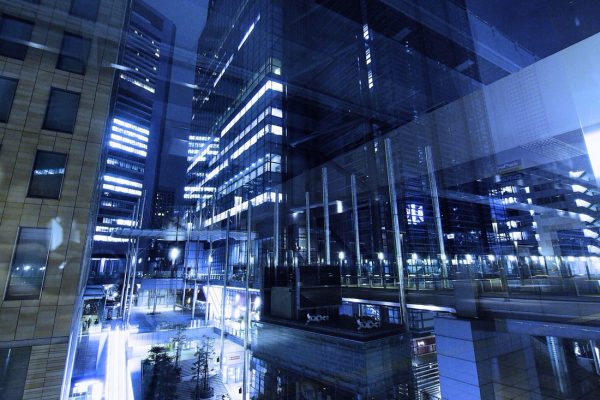The Smart City vision is far from unreal, yet far enough to make us question our approach. Ram Venkat from Schneider Electric shares some steps we need to pave a (sustainable) way there.

July 15th, 2019
According to the IESE Cities in Motion Index, London is classified as the world’s ‘Smartest City’, based on a model using key indicators like Economy, Governance, Urban Planning, and Technology. However, today’s London is far from the vision of the Smart City that technological evolutions have enabled.
So how do we progress smart city goals, when we are admittedly struggling with adapting a sustainable Smart Building strategy?

The Internet of Things (IoT) will continue to play a pivotal role in shaping our strategy towards an ecosystem that enables productivity and nurtures occupants towards its purpose – whether it be an office building, a hospital, or a university. With approximately 30 per cent of global greenhouse gas emissions and 70 per cent of energy consumption attributed to buildings, a smart building is the fundamental element of a smart city.
If a smart building is a collection of disparate systems seamlessly working together, a smart city is a microcosm of disparate environments, including smart buildings and the grid, operating as one organism. Cities define a civilisation, which shines a light on the human element. Thus, today’s push for a smart building to meet these humanistic objectives, such as well-being and social cohesion, will form a key part of the transformative journey to a smart city.
A holistic building management system is key to a smart building strategy. The struggles of integrating multiple technologies within a building are well-known to both service providers and consumers alike. In a city scenario, these challenges are only going to present on a larger scale. Concerns such as Cybersecurity and data protection are more complex to solve at a city level, with a lot more at stake.
While IoT platforms for smart cities have already been presented in the industry, it is unquestionable that today’s infrastructure – both physical and digital, are not prepared for it. A viable solution is to ensure strong, well-thought-out policies for these individual systems, bearing in mind their co-operation with other systems. For this, there is an urgent need of educated policy-makers with multi-system knowledge, to ensure the execution of ideas.

The present is digital. IoT is happening now. Data is being generated in zettabytes. We generate enough data in our systems to visualise a digital replica of our systems, and further simulate their operations. So, what then is the future?
If there is one driver that is only going to become more central to the story, that is electricity. The future relies on our ability to provide resilient electricity to the infrastructure within the smart city. The grid is the backbone of the smart city, and this backbone needs to be flexible, much like the human backbone.
However, this also remains one of our biggest challenges to date particularly with the increasing amount of technology reliant on electricity.
For example, Electric Vehicles (EV) are no doubt the answer to reducing carbon emissions in the transportation sector, but the reality is that our present grid will struggle to cope with a high pace of EV adaptation. Therefore, it is crucial that we continue strengthening our grid infrastructure to be able to adapt these technologies at a faster pace.
Condition-based monitoring systems can lead to self-healing designs, which will enable modernisation of the power system to an automated Microgrid. Furthermore, smart grids will enable consumers to gain access to their energy data. This promotes them to autonomously make decisions on their energy consumption.
The Smart City vision is far from unreal, yet far enough to make us question our approach. Smart Buildings and Smart Grids hold the key to a successful realisation of this vision. The quickest win in this journey is the strengthening of our grid, enabling a dynamic, intelligent, automated power system.
Parallelly, collecting and analysing data from our buildings, and more importantly converting those analytics into actionable insights, will help shape truly smart buildings.
Like the grid, condition-based monitoring of building management systems can pave the path towards self-healing buildings, augmented by technologies such as artificial intelligence, service automation, and workforce scheduling.
The journey to smart cities is going to be a challenge – a challenge that can be easily overcome by strengthening the foundations of the concept through buildings and the grid. Learn more about how Schneider Electric contributes to smarter cities.
A searchable and comprehensive guide for specifying leading products and their suppliers
Keep up to date with the latest and greatest from our industry BFF's!

In the pursuit of an uplifting synergy between the inner world and the surrounding environment, internationally acclaimed Interior Architect and Designer Lorena Gaxiola transform the vibration of the auspicious number ‘8’ into mesmerising artistry alongside the Feltex design team, brought to you by GH Commercial.

Suitable for applications ranging from schools and retail outlets to computer rooms and X-ray suites, Palettone comes in two varieties and a choice of more than fifty colours.

Channelling the enchanting ambience of the Caffè Greco in Rome, Budapest’s historic Gerbeaud, and Grossi Florentino in Melbourne, Ross Didier’s new collection evokes the designer’s affinity for café experience, while delivering refined seating for contemporary hospitality interiors.

Marylou Cafaro’s first trendjournal sparked a powerful, decades-long movement in joinery designs and finishes which eventually saw Australian design develop its independence and characteristic style. Now, polytec offers all-new insights into the future of Australian design.

When iconic brands wield their influence, the ripples extend far beyond aesthetics. And so when the MillerKnoll collective formed, the very concept of design shifted, supercharging the industry’s aspiration to create a better world into an unwavering sense of responsibility to do so.

Available now across Australia, Eden TPO is setting new standards in terms of not just sustainability, but also style.
The internet never sleeps! Here's the stuff you might have missed

From the trailblazer of Spanish industrial design comes a new collection of recycled rugs – a powerful exploration of the concept of waste, a keen celebration of imperfection, and a new underfoot symbol of responsible design.

Salone del Mobile 2024 is only a few weeks away, so we’re highlighting here seven special events, spaces and installations that we’re certainly planning to check out.